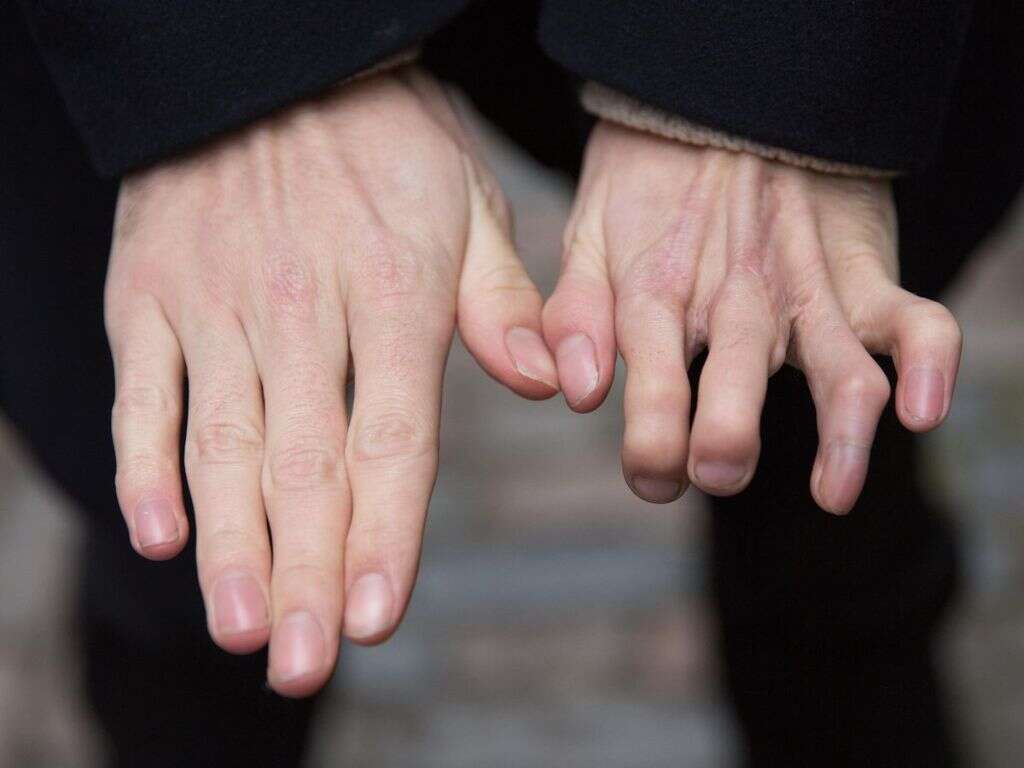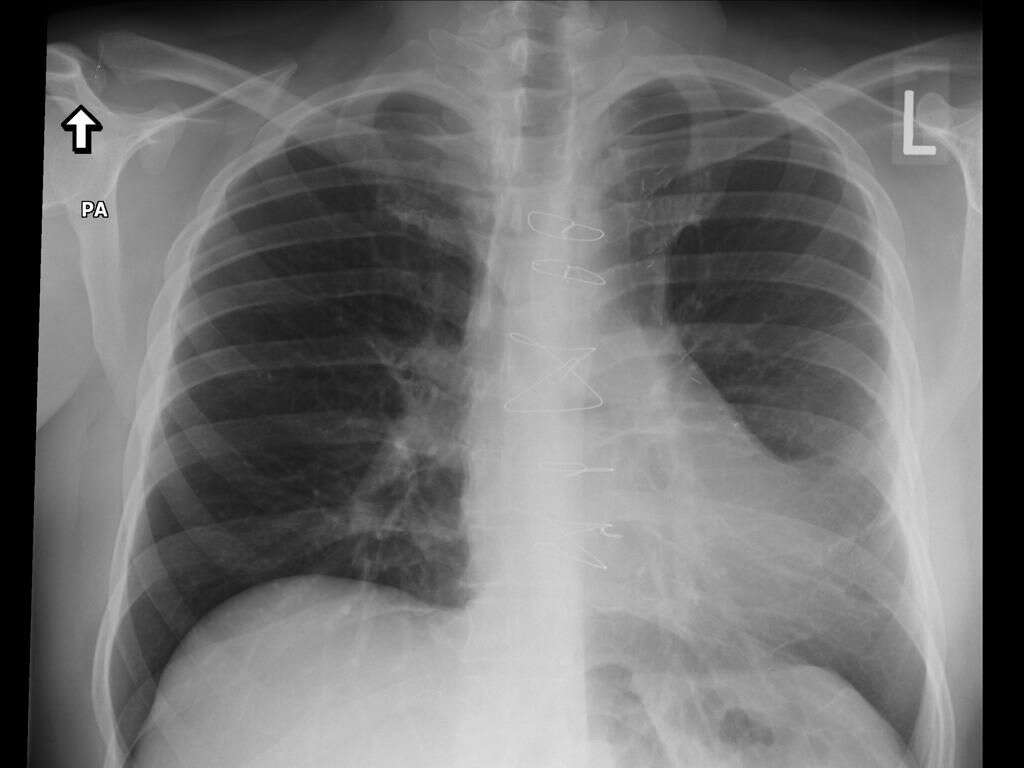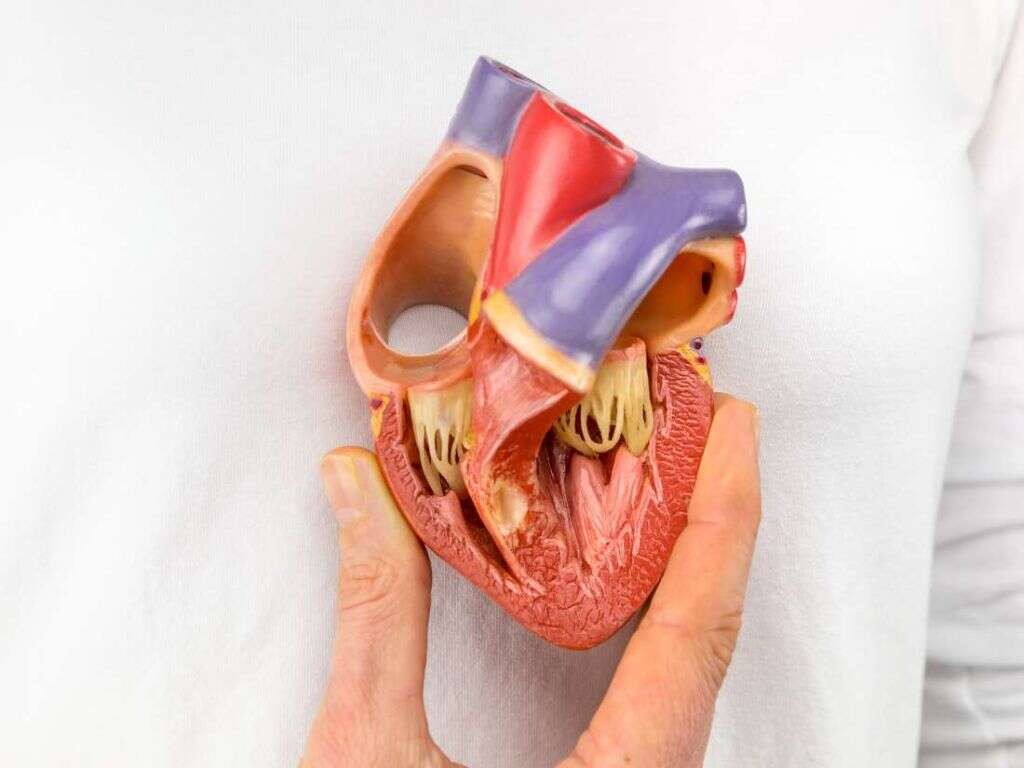What Is Poland Syndrome?
Poland syndrome is a congenital condition that causes abnormalities on one side of the body. Areas most often affected are the chest, shoulder, ribs, arm, and hand, usually on the right side. Structures in these areas can be deformed or missing altogether, although the severity of symptoms varies widely among individuals. The condition is not life-threatening and does not affect quality of life or mental function. Celebrities living with the condition include actor Gary Burghoff, Olympic boxer Jérôme Thomas, and PGA Tour golfer Bryce Molder.
Poland syndrome was named for British surgeon Alfred Poland, who in 1841 published results of an autopsied patient showing signs of the condition. However, a French doctor had previously described it in 1803, and disagreement concerning the name continues today. The following are 10 more facts about Poland syndrome, including how to treat it.

1. Underdeveloped Chest Muscles
Most people with Poland syndrome are born without all or part of the pectoralis major on one side of the body. This is the largest chest muscle. Smaller chest muscles such as the pectoralis minor and those that line the chest cavity may also be smaller or missing. Consequently, patients have less strength on one side of the body, and their chests can appear sunken in on one side.
People with Poland syndrome may also grow less underarm hair on one side, or grow it in a location not directly inside the armpit. In women, the affected breast contains less mammary tissue, and the nipple may be abnormal or missing altogether. However, patients with Poland syndrome have breastfed successfully, even after reconstructive surgery to the breast.

2. Malformed or Shortened Ribs
The ribs can appear to stick out due to a lack of tissue that would normally cover these bones. The rib cage itself is also affected in 20% of those living with Poland syndrome. Ribs can be too short to connect with the sternum in the middle of the chest. Others might be thinner or shaped differently from normal ribs. The second to fourth or the third to fifth ribs are usually the ones affected.
When the ribs are malformed or too short, associated muscles in the chest cavity are often also misshapen. This symptom allows parts of the lung to poke through gaps in the musculature, causing a lung hernia. This condition can cause breathing problems and lead to infection so is usually corrected with surgery once diagnosed.

3. Shortened or Joined Fingers
Besides the chest area, the fingers and hands of one side are the body parts that most often show symptoms. Abnormalities can include a small hand with short fingers (brachydactyly), fingers that are webbed or joined (syndactyly), or extremely small fingers. A combination of these conditions is termed symbrachydactyly. The traits vary in severity from being barely noticeable to causing a complete lack of hand function.
Some people with hand abnormalities also have shorter arms. The shortened bones are usually the ulna and radius of the forearm, rather than the humerus of the upper arm. The deformities do not affect both upper limbs but occur on the same side of the body otherwise affected by the condition. Other than causing asymmetry, shortened arm bones do not often cause complaint.

4. Abnormal Internal Organs
Although rare, signs of Poland syndrome can be seen in the kidneys, testes, vertebrae, or heart. The kidney may contain several malformed internal structures. Usually there are no symptoms from an abnormally shaped kidney, but increased risk of infection is possible. Cervical vertebrae are shaped differently in rare cases, and in men one testis may remain undescended.
Some babies born with Poland syndrome have dextrocardia, which is characterized by having the heart located in the right side of the chest cavity. Normally the heart lies deep and to the left of the sternum with the bottom pointing to the left; in dextrocardia, the heart is more towards the right with the bottom pointing right. This arrangement in itself is not problematic for the patient but sometimes is accompanied by structural abnormalities that do cause complications.

5. Occurrence
Poland syndrome is considered to be a rare disorder. It is thought that for every 30,000 to 80,000 babies born, one will be born with the condition. It is three times more likely to occur in boys than girls, and three times more likely to occur on the right side of the body than on the left.
For people whose pectoral muscles and arms have been underdeveloped or malformed since birth, Poland syndrome is the most likely diagnosis. However, many cases may go undiagnosed, especially when symptoms are mild and don’t involve the hands. Women especially may feel embarrassed to have a doctor examine their breasts and consequently not seek treatment.

6. Onset
Poland syndrome is a congenital condition, which means symptoms are present at birth. In severe cases, abnormalities of the chest and hands are readily apparent in newborns. Parents who are made aware of their child’s problem can choose among treatment options and help him or her live with whatever deformities persist. Some cases are made evident even before birth by using ultrasound technology.
In cases where the hands are asymptomatic, it is possible to overlook more subtle symptoms of Poland syndrome during childhood. Girls especially may not realize they are missing part of their breast until after puberty, when they begin to notice that one breast is significantly smaller than the other. At this time teenagers of both sexes are in danger of losing self-esteem due to feeling they are not “normal,” and a correct diagnosis can be the first step in giving them the emotional support they need.

7. Causes
No one knows for sure what causes Poland syndrome, but theories exist. Many experts believe it is due to a lack of blood flow to the fetus around the sixth week of pregnancy. This causes a disruption to the fetal arteries that would normally support the development of the chest area, and thus abnormalities can result. The severity of the symptoms is thought to depend on the degree to which blood flow was blocked.
Poland syndrome also may be caused by defects in the apical ectodermal ridges, which are located at the end of the arms and legs and eventually become the hands and feet. A case also was reported in 1990 of a patient with Poland syndrome who also exhibited severe abnormalities in the pituitary gland, the organ that synthesizes human growth hormone and otherwise directs development. Thus, the pituitary gland may be involved, although more research is needed in this area.

8. Heritability
Poland syndrome is not associated with a particular gene so is not considered a genetic condition, and genetic testing is not used to diagnose or predict its occurrence. In the majority of cases it appears to be a sporadic condition, which means that it occurs for no apparent reason and is not passed down to subsequent generations.
In some cases, however, Poland syndrome does appear to be heritable, because there are known families with multiple cases of the condition across generations. When analyzing the pedigrees of these families, the pattern of inheritance resembles that of other disorders caused by dominant autosomal genes. Researchers so far do not understand this pattern, because they do not know which gene or genes might be responsible for the suite of symptoms.

9. Chest Treatments
There is no cure for Poland syndrome, but various treatments exist. For the chest region, treatment is usually of a cosmetic nature, aimed to make the affected side more visually similar to the non-affected one rather than to restore muscle strength. Reconstructive surgery can be performed to graft or move ribs, to use existing muscles or implants to fill in missing portions of the pectoralis major, or to implant bags of silicone in place of breast tissue.
In addition to surgical procedures, tattooing is also sometimes used. Tattoos can augment or create the appearance of a nipple and/or areola. Some people choose to go beyond the scope of recommended therapeutic tattoos and create pictures or designs across the entire affected chest area. This artistic approach can have the intention of disguising the asymmetry of the chest or of celebrating the uniqueness of the individual’s body.

10. Hand Treatments
Because finger impairments can affect quality of life, they are generally given priority over abnormalities in the chest area. For mild cases, treatment without surgery can be successful. Doctors may recommend stretching exercises to improve range of motion or place the fingers in splints or casts to encourage them to grow straight. There is no treatment for abnormally small hands or short fingers that otherwise function well.
To separate fused fingers, a surgery called syndactyly release is recommended when a child is one year old or older. During this procedure, an incision is made between the fingers, and the wound covered with flaps of skin left over from the incision or with skin grafts from elsewhere in the body. Cases in which the thumb or pinky are fused are considered more serious and require surgery at an earlier age to ensure normal growth of the surrounding fingers.












